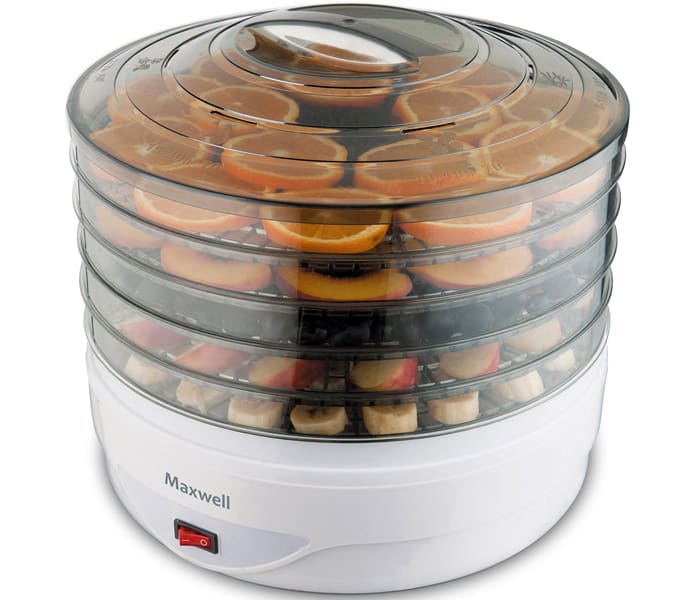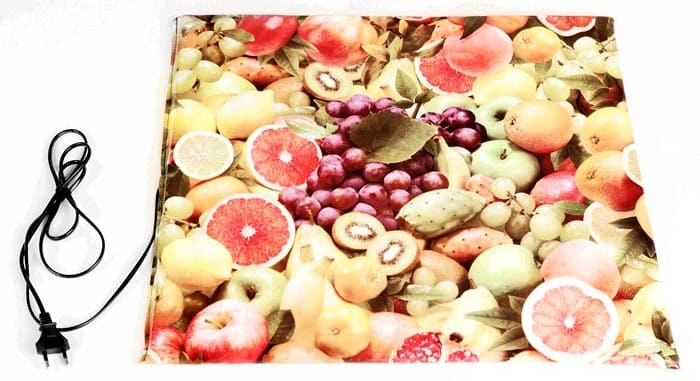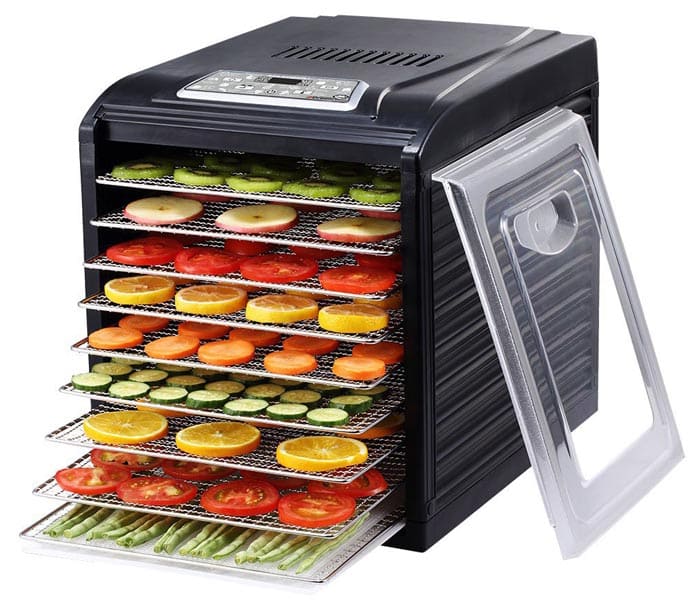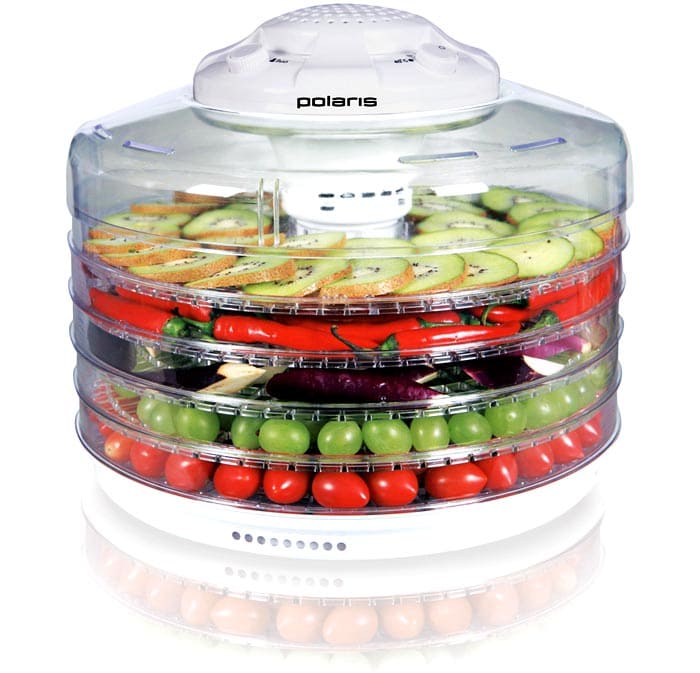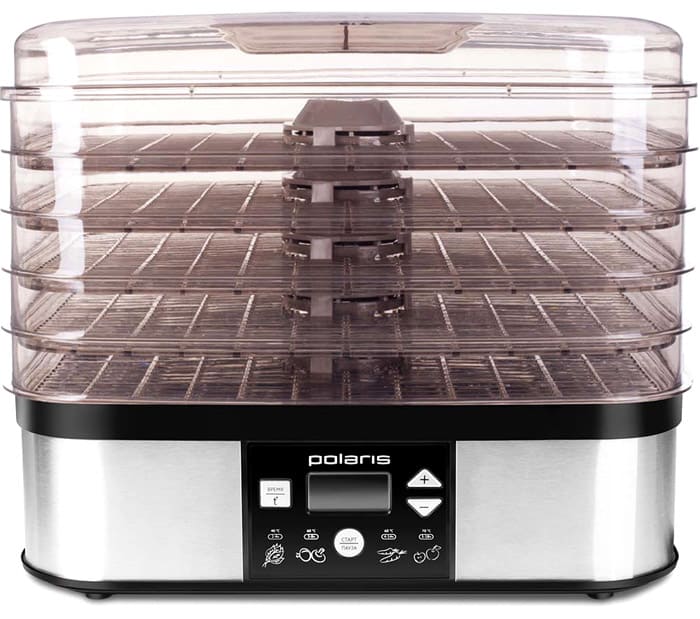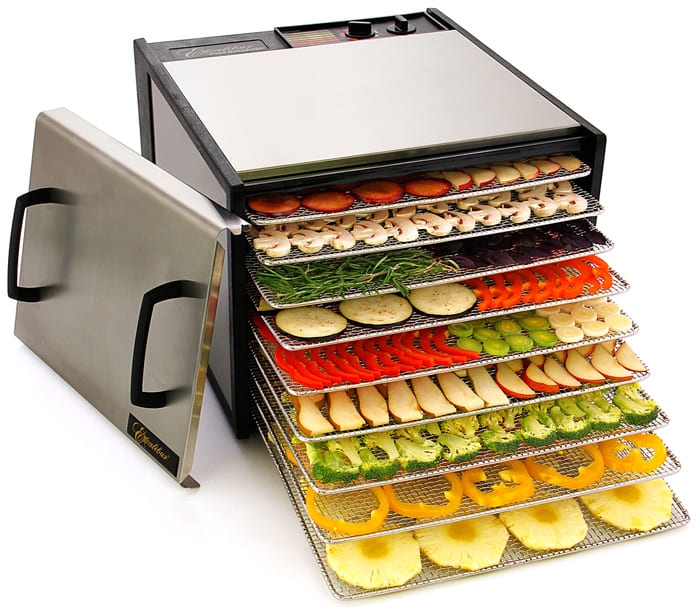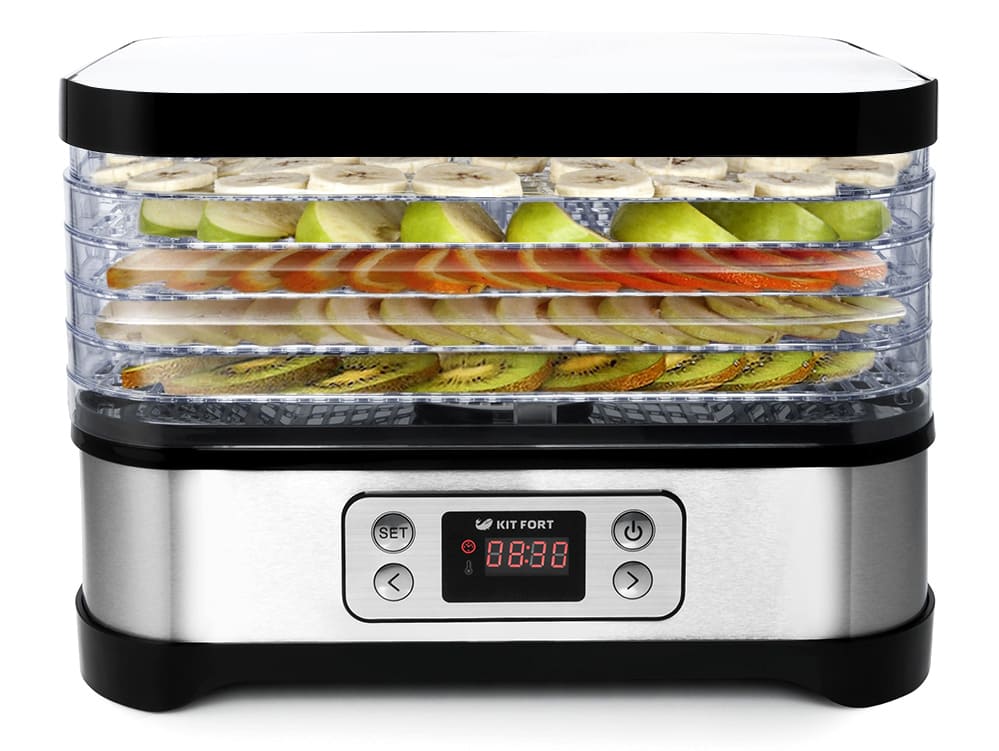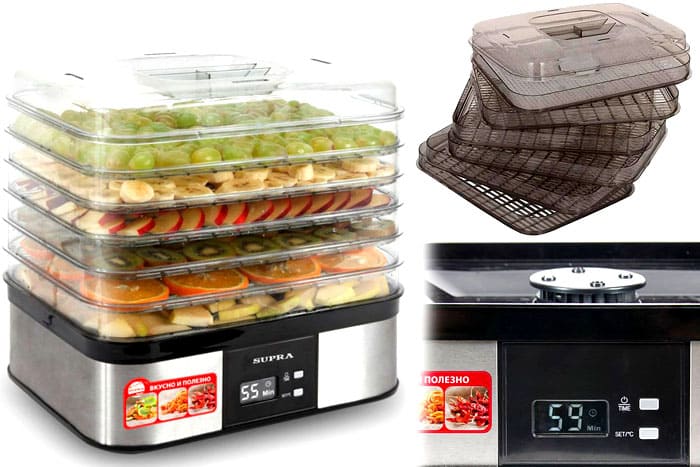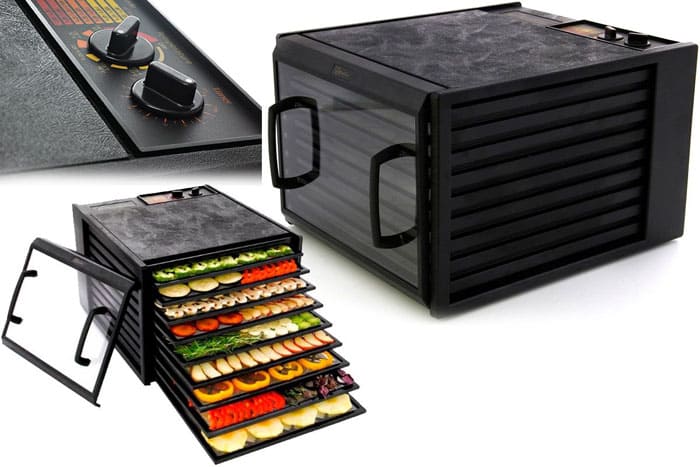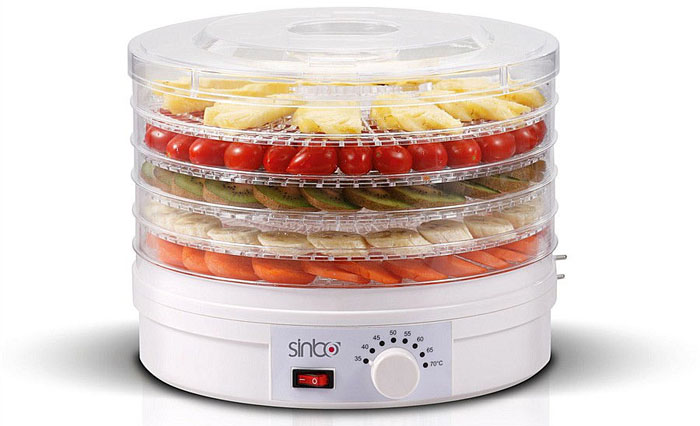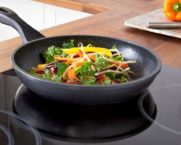Electric dryer for vegetables and fruits
Dried fruits are famous for good and wholesome products since ancient times, before the discovery of conservation processes. We will not discuss the old-fashioned ways of drying vegetable and fruit products like sun drying. The editors of homemaster.techinfolux.com/en/ decided to find out what a modern electric dryer for vegetables and fruits is, how to use it, which models are the best, which is very important on the eve of the beginning of summer gifts from the garden.
The content of the article
- 1 Electric dryer or oven for drying
- 2 What is an electric dryer for fruits and vegetables
- 3 What are the types of dryers for vegetables and fruits
- 4 What parameters are guided by when choosing an electric dryer for vegetables and fruits
- 5 Choosing an electric dryer for vegetables and fruits
- 6 How much do electric dryers for vegetables and fruits cost?
- 7 Video: which electric dryers are recognized as the best
Electric dryer or oven for drying
In the battle for the best drying method, an oven and an electric dryer itself can participate. But the loss of the oven will be ensured by a longer operating mode, and, as a result, by cosmic bills for consumed electricity.
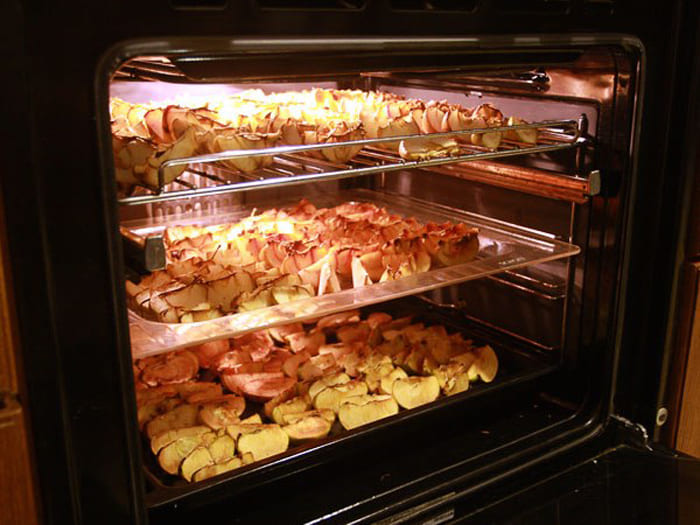
This is the option when buying a bag of dried fruit is really cheaper. In addition, a working oven creates additional stuffiness in the house in hot summer.
A dryer specially designed for this is very easy to use, and the efficiency from its operation is high and superior to other types of drying.
What is an electric dryer for fruits and vegetables
The drying of the fruit is provided by an electric heater, which, depending on the model, can operate in conjunction with a fan. Thanks to him, moisture evaporates from the products, leaving them marketable and appetizing.
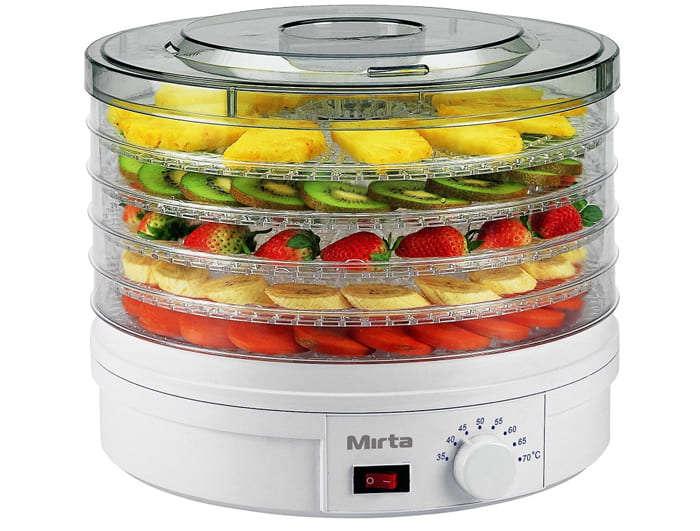
The package includes trays where sliced or whole fruits can be placed, a general lid responsible for maintaining the microclimate and temperature
A row of slices or fruits is laid out on each tray, and the trays themselves are placed in the unit body. Next, the required temperature is set, and the device starts its work.
Teng heats the air, the fan drives it through the chamber, and future dried fruits have a good time.
What are the types of dryers for vegetables and fruits
Varieties of electronic type designs are convection and infrared. Each species has advantages and disadvantages that it makes sense to study.
Convection
A fan is built into such models. The electric heating element heats up the air (the maximum temperature is 80 ° C), the fan repeatedly drives the air flow, dehydration occurs.
This is the most common dryer. The advantages of this type include ease of use, availability and solid capacity, which allows drying 5-6 kg of products in a relatively short time.
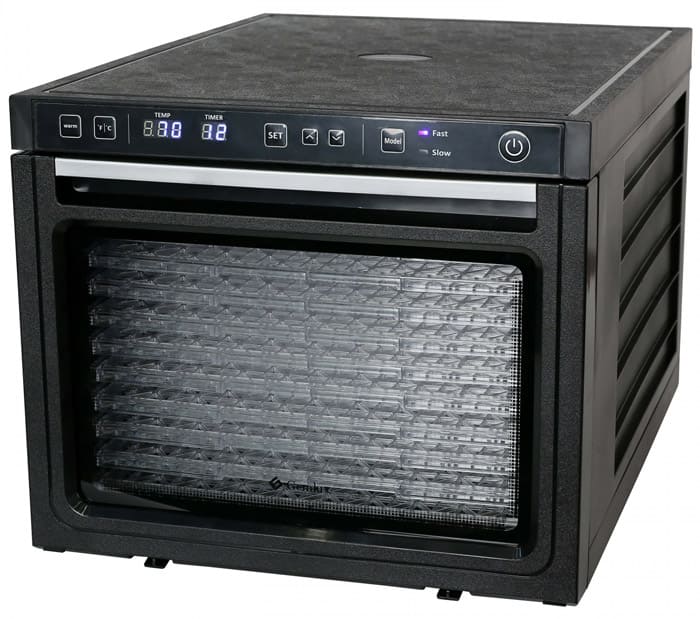
In addition to vegetables and fruits, both meat and fish are perfectly dried in a convection electric dryer.
But there are also disadvantages: the duration of the operation of this type of device is quite long, up to 10 hours, and the unit itself is by no means silent.
Also, for many people who are worried about a healthy diet, it will be important that high temperatures do not contribute to the preservation of the vitamin composition in the product.
And if we compare it with ovens, then the convection apparatus also loves to "eat" electricity, although not in such quantities.
When considering buying a model without a fan, keep in mind that they are less efficient and take longer to dry.
Infrared
The type of dryers improved by technologies uses an infrared emitter in its work. Dehydration occurs due to infrared rays that penetrate the food in the trays. Typical heating in the chamber is about + 40 ° C ... + 60 ° C.
The advantages include the preservation of up to 95% of nutrients in products, and this is a solid number. Therefore, due to the low temperature, the color and smell of the dried products remain the same as they were when fresh.
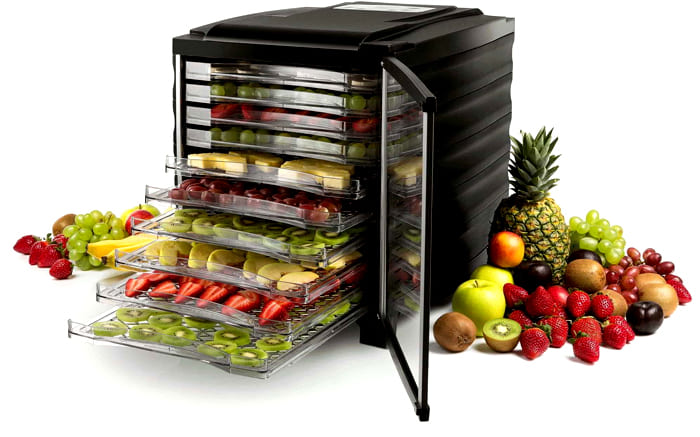
Electricity is significantly saved, and the drying process itself does not take as much time as in the convection version
The products dried in this way retain their appearance and properties for two years.
Now let's discuss the cons. The price of the device is immediately evident. It is significantly higher than a convection electric dryer. You cannot dry whole fruits in trays, only slices, and nuts do not easily lend themselves to such processing. The unit also cannot boast of volume.
By the way, there are also pleasantly priced IR dryers - tablecloths. They work by using graphite paths through which current flows, causing heating in the infrared spectrum.
What parameters are guided by when choosing an electric dryer for vegetables and fruits
There are several criteria that make up the characteristics of dryer models that can influence the choice of the buyer.
Volume
Volume can be at the top of the list. The fact is that with the beginning of the hot period of the blanks, you need to cook everything quickly and in large quantities. It is clear that if you need to dry food infrequently, then a small size is enough, but if you need to dry 5 apricot buckets and two bags of apples?
Now let's figure out what the indicated volume means on the device. If you see that the dryer says "10 L", this does not mean that a 10-liter bucket of fruit will fit in it. For example, each apple will be sliced, stacked in one layer, and even if all the containers are full, it turns out that just over half the bucket will fit. Therefore, we are not looking at the volume itself, but precisely the useful area, which is also indicated in the characteristics of the device.
In a volumetric electric dryer, apricots are dried during the summer, turning them into dried apricots, apples, pears, bananas, mushrooms, bread, and medicinal herbs.
Pallets, containers, trays
After the volume, it's worth talking about exactly where you will place the products. The number of sections will directly indicate the usefulness of the device, significantly increasing its height.
The height of the container is also important: the lower the tray, the thinner the slicing will have to be, and the high walls allow the whole fruit to be dried. Good clearance between sections affects the speed of the process.
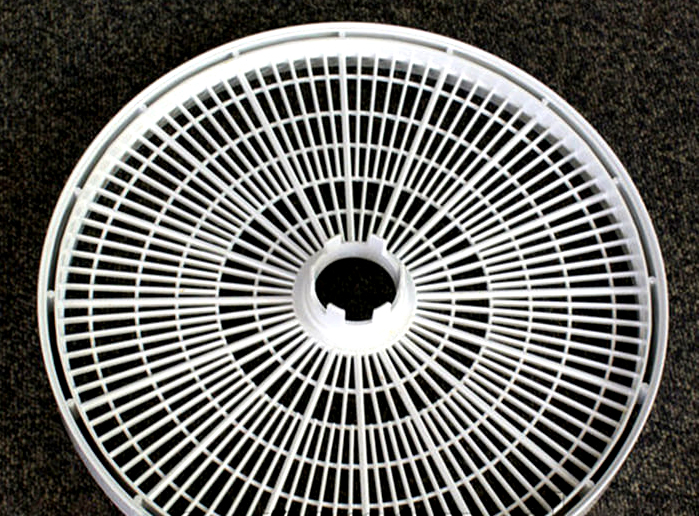
There are different types of trays. For some models, it is quite possible to buy a replacement for a broken section
It is considered a plus if the sections are removable. Excess containers are simply removed, and if you need to dry a lot of things at once, the trays are installed in place.
Pallets are made of metal or plastic. There is a danger here, since not all manufacturers use high-quality safe plastic. The metal, in turn, hides the content from the eyes, which is not to everyone's liking, but is more expensive.
Power and temperature conditions
The power of different models is different, varying within the range of 200 W - 1 kW. Devices with a power of 350-600 W are optimal, but here again we return to the volume parameter.
When drying vegetables and fruits, they do not heat up much, and a power of 1 kW, giving high temperature, is simply not needed. Therefore, it is more important for us to select the mode, since for drying different types of fruits, the device must be heated in its own way.
Modes and functions
The better the model, the more functional it is. Traditionally, there is enough button responsible for turning on and off, but when you can use different operating parameters, the benefits of the product increase.
Most often, models show three modes:
- Low is the most gentle, it only heats food up to + 35 ° C;
- Medium processes fruits at + 50-55ºС;
- High operates in those models where meat and fish drying is provided at temperatures from + 60 ° C to + 80 ° C.
You can find a unit with a timer that will set the operating time and relieve the person of responsibility for monitoring the process.
It is good and convenient when there is a backlight: you can determine the degree of readiness of the product without opening the lid.
Choosing an electric dryer for vegetables and fruits
First, we decide what exactly and how much we want to dry and how often. If the summer time is hot for you and you are an adherent of dry fruits and vegetables, then there is no point in purchasing tablecloth models. And if you cook very few products in this way, then you should buy an inexpensive convection apparatus with a power of 200 watts.
It makes sense for a large family to look after a model with three to five trays. If the model is convection, then it is better to take the one with the heating element from below, and the power of the product will be 350-600 W. Three temperature settings will prove to be very useful.
People who are looking for a healthy diet will appreciate the infrared options, where the heating element is located at the top or side.
There are models for 15-20 trays, which will be appreciated by owners of large plots with grandiose harvesting plans.
How much do electric dryers for vegetables and fruits cost?
If you decide to purchase a tablecloth type dryer, then it will cost you 750-1200 rubles.
Electronically controlled convective models are always more expensive than mechanics. Their price starts around 1,500 rubles. The cost limit may also exceed 100,000 rubles if you are planning your own production of homemade dried fruits. But on average, decent dehydrator options cost about 3500-5500 rubles.
Infrared dryers are even more expensive, their price threshold for home use varies between 2500-36000 rubles.
Video: which electric dryers are recognized as the best
How do you dry vegetables and fruits? If you decide to buy a dryer, please write in the comments if the chosen model justified itself, we are very interested!



